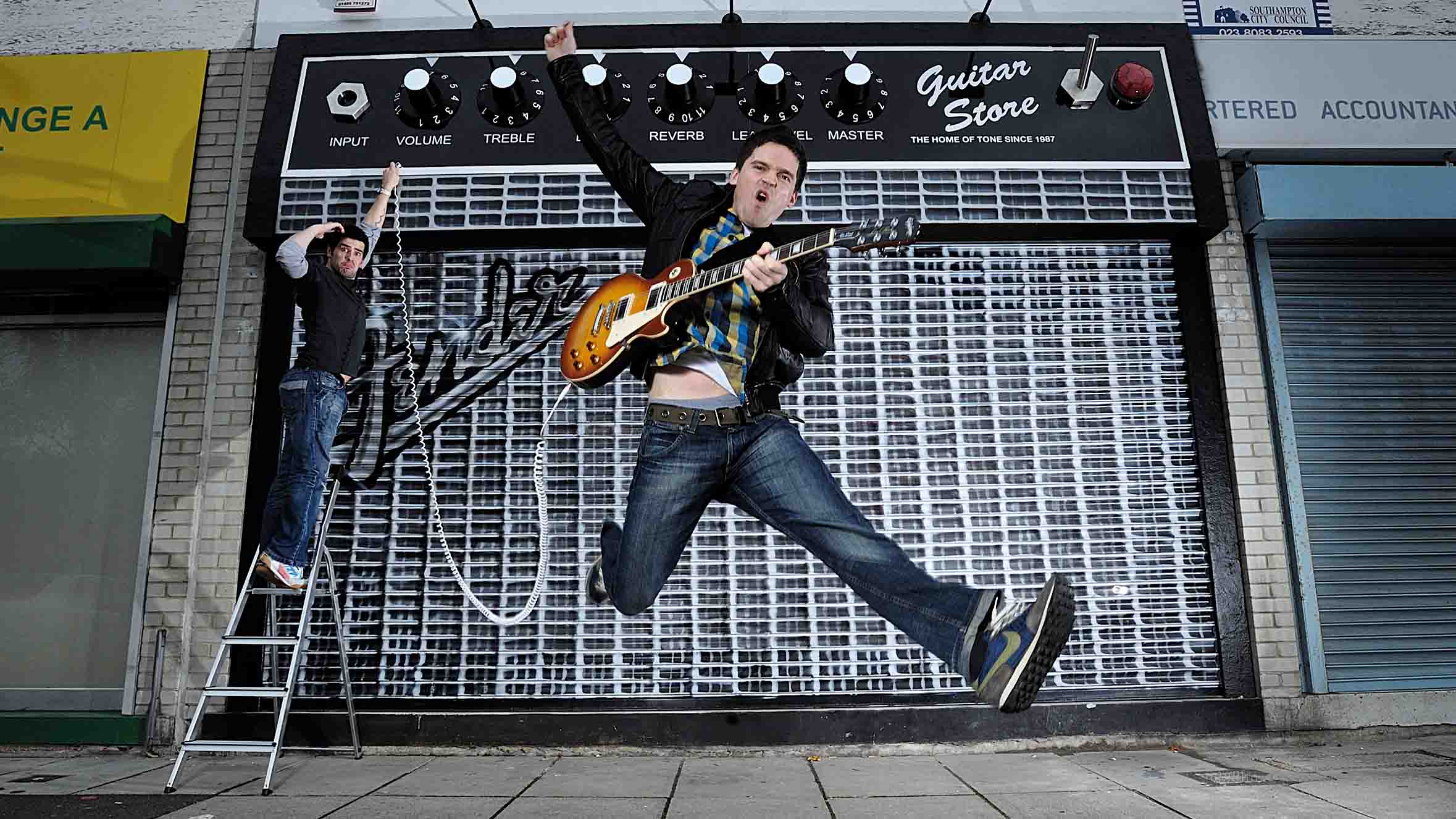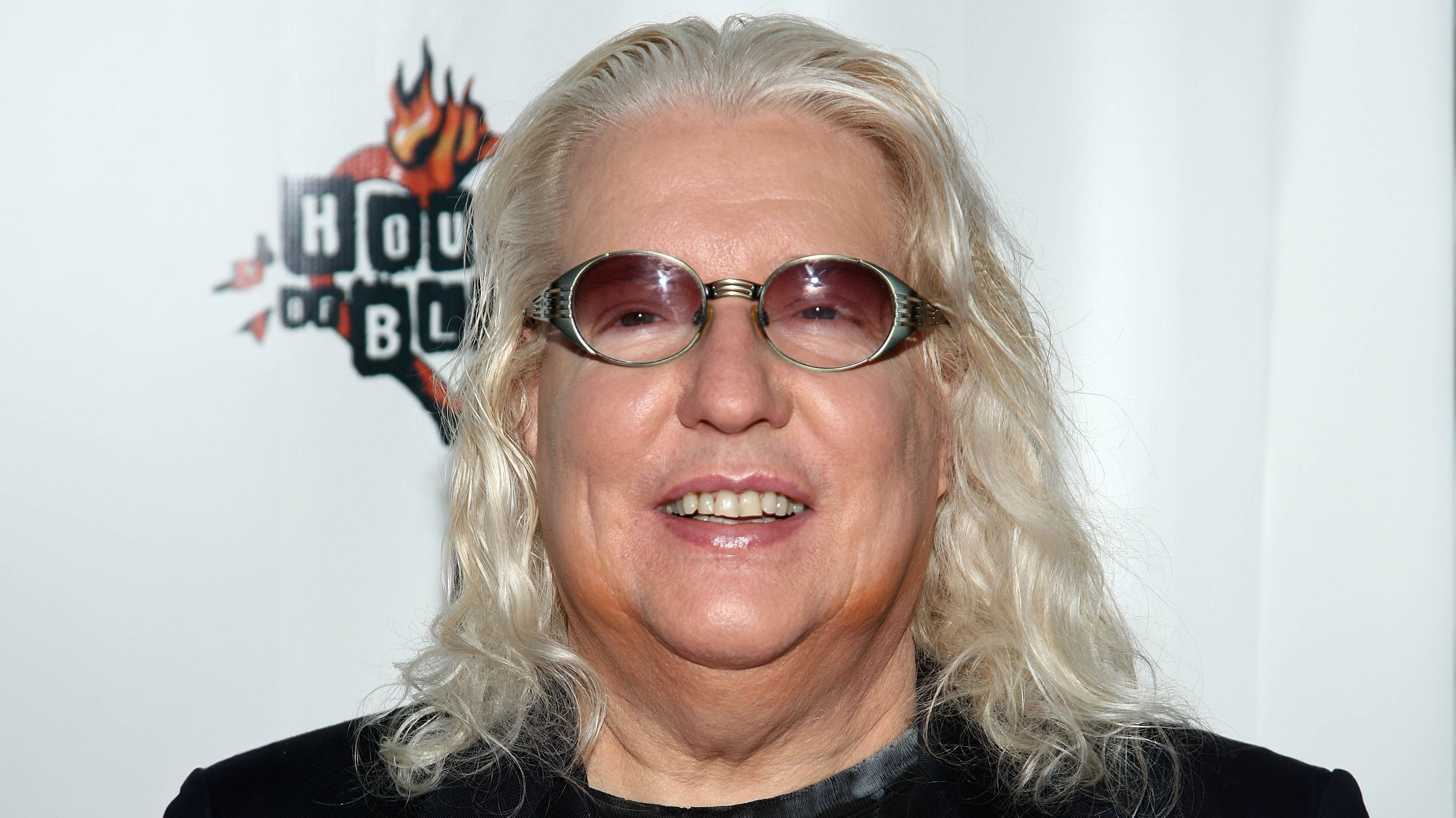6 ways to supersize your guitar sound
Only guitarist in the band? Here's how to beef up your tone…

That moment when you switch from your chunky rhythm part to that climatic lead break and everything just… dips. The vulnerability of being the only guitarist is laid bare and you promise yourself that you'll never stray from the warm embrace of chords again.
Well, just hang on, it's not a case of either/or. Here are some straightforward ways you can really enhance your sound…
1. Boost
Using a boost pedal isn't just a matter of volume for a guitar player. It's also about what frequencies you're boosting when it's a case of driving the front of your amp in an effective way for riffs and solo breaks.
Using a clean boost pedal usually gives you control over treble, bass and mids to really help your solo or chorus part lift in a band mix - pay special attention to those mids to help you cut through. And if you want the grunt of gain, there are tons of overdrive pedal options such as the classic Tube Screamer or Fulltone OCD to add sustain for leads or dirt for riffs.
A typical overdrive unit tends to be more transparent in tonal character and more responsive to your playing dynamics than many distortion-type stompboxes.
2. Tune down
Ever considered tuning all your strings down a semitone? Alice In Chains, Hendrix, SRV and Guns N' Roses are just some of those that have. Tuning to Eb Ab Db Gb Bb Eb produces a darker, heavier tonality for you to try without dramatically affecting intonation, and may suit some singers' ranges more. Though you may want to consider going up a gauge in strings if you stick with it longterm.
If you want to take things further, consider alternate tunings such as DADGAD and John Mayer's favourite, 'modal E' (EBEF#BE), which can utilise open string drones for a richer, more expansive sound. These can be especially effective for solo guitarists looking to project their chords and melodies.
Get the MusicRadar Newsletter
Want all the hottest music and gear news, reviews, deals, features and more, direct to your inbox? Sign up here.
3. Loop
You need to take the time to consider how you'll use loops and also get your timing dead-on to avoid a mess
These aren't just for the Sheeranites - consider using a looper pedal for some parts to give you an extra layer… or even several. As well as many standalone looper options out there, some delay pedals offer looping functions. But you need to take the time to consider how you'll use loops and also get your timing dead-on to avoid a mess.
Mike Sullivan is guitarist with instrumental trio Russian Circles and takes full advantage of the potential for loops to widen his live sound. He recommends choosing your live looper carefully.
"The main thing for me is ease of use," he says. "It takes precedence over sound quality for me: how usable is it live? If a loop is no good, or if I have to stack a few loops and take one away, I need to have the ability to do that in a split-second. Otherwise you have blips and beats coming and going that shouldn't be there and it's distracting."
He's also quick to point out that you need to think about tonal diversity between your loops - something that's often overlooked.
"It's good to use different tones, pickup positions, EQs and distortions. If you have the same distorted tone three times over, it's going to get muddy. Any dynamics you can give to help make that first loop more audible will benefit the whole song."
4. Two amps
Using two amps on stage is certainly going to get you one louder, but it's about more than just volume. Savvy positioning (such as either side of the drums) will widen your sound, with the different responses from two amps also enabling the panning of stereo delay and tremolo.
You may prefer one amp for clean and another for dirt, but how about running those strengths at the same time for serious clarity that cuts through?
But if you choose to run two amps into one speaker for their tonal versatility, there are a few things you need to consider: the speaker impedance needs to match your amp's power and the load between the amps needs to be transferred safely. We'd advise an amp switcher from the likes of Radial and Ted Weber.
Another potential issue is unwanted ground-loop hum but a switcher or splitter with separate outputs, and options for reverse phase and a ground-lift switch can help kill hum fast. Lastly, don't expect the rest of the band to help you carry that extra amp. But the pay off is worth it, right?
5. Double up
Run one amp for clean and another for dirt for serious clarity that cuts through
Your bass player isn't just the strange-looking bloke with the oversized guitar who should only be communicated with via nods when absolutely necessary. They can also be your biggest ally for an all-out riff attack.
Try playing unison parts to give you that lower-end foundation that can make a great riff hit harder. Rage Against The Machine and Black Sabbath are just two bands who have made a one-guitar setup sound huge with ace bass. Mike Kerr of Royal Blood even manages to combine both roles in one by using a combination of octave pedals to create the effect of a bass/guitar dynamic.
With all that in mind, you might want to consider backing off on the bass in your own EQ when playing loud to allow for the bassist to make their mark. Too much bass - especially with drive and a neck pickup in play - can mean muddiness with the rhythm section.
6. Think simple
When coming up with lead breaks, rhythm parts or riffs, consider how you're utilising what's at your fingertips to enhance your sound. Simplicity can often be the key to this, giving space and letting notes ring.
Try creating effective layers by playing a lead with a fretted melody along one string while also playing the next high string open at the same time (hear the Edge's riff in U2's I Will Follow).
But there's also a lot to be said for letting simple chords breathe - AC/DC's Highway To Hell and Back In Black make them sound huge and heavyweight by just letting them ring out a little.
For more tone tips, check out our 50 secret tips to better guitar tone and 18 ways to improve your blues guitar tone.

Rob is the Reviews Editor for GuitarWorld.com and MusicRadar guitars, so spends most of his waking hours (and beyond) thinking about and trying the latest gear while making sure our reviews team is giving you thorough and honest tests of it. He's worked for guitar mags and sites as a writer and editor for nearly 20 years but still winces at the thought of restringing anything with a Floyd Rose.
“Built from the same sacred stash of NOS silicon transistors and germanium diodes, giving it the soul – and snarl – of the original”: An octave-fuzz cult classic returns as Jam Pedals resurrects the Octaurus
“A purpose-built solution for bassists seeking unparalleled sound-shaping capabilities”: Darkglass Electronics unveils the Anagram Bass Workstation – a state-of-the-art multi-effects for bass guitar with neural amp model support and a 7” touchscreen











